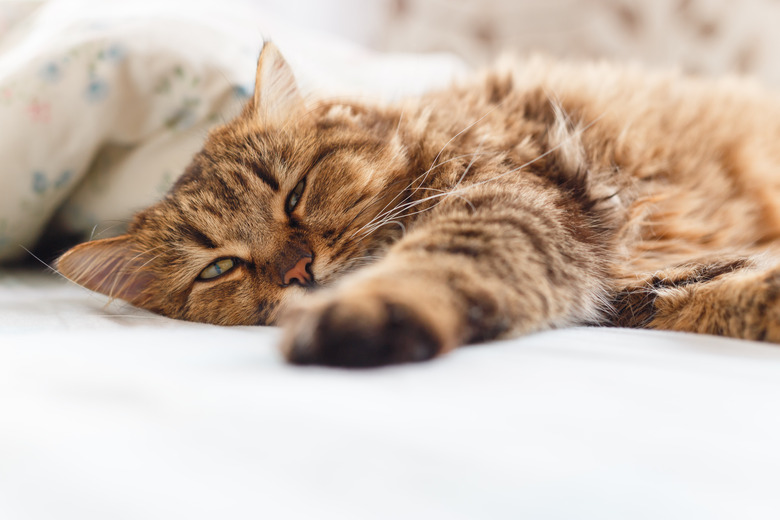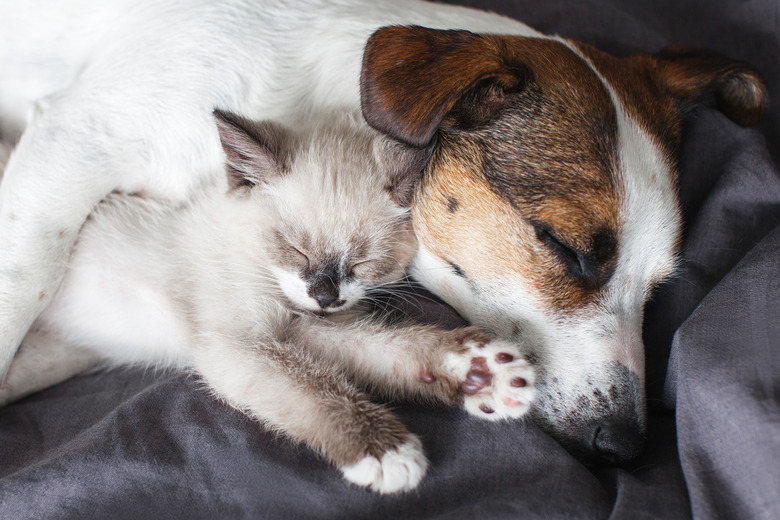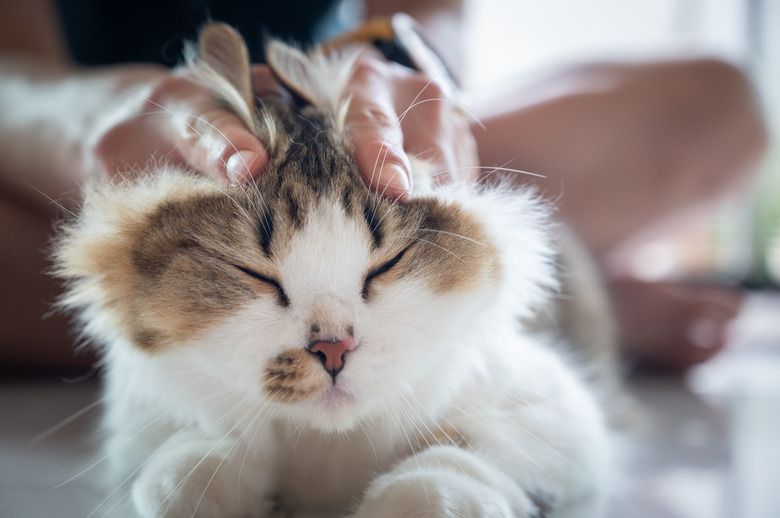How To Check Your Cat's Temperature Without A Thermometer
How to Check Your Cat's Temperature Without a Thermometer
Your cat hasn't been their usual whirlwind of energy, dashing across the room to chase their favorite toys. The rattle of their food bag fails to bring them running to their dish. We spoke with Dr. Shagufta Mulla, a veterinarian with a DVM degree from Colorado State University with 20 years of experience as a small animal veterinarian, who told us that if your cat is acting sick, you might want to check to see if they are running a temperature.
How can I check the temperature of my cat?
How can I check the temperature of my cat?
A thermometer is the most accurate method for checking your cat's temperature. The most accurate way to gauge a cat's body temperature is by using a rectal thermometer, but many cat owners aren't comfortable taking the temperature this way at home. It can also be hard to keep your cat calm enough to take their temperature with a rectal thermometer. If you don't have a digital thermometer or don't think your cat will stand for you to take their temperature, there are other ways to tell if they have a high fever.
Ear thermometers are another option. "Ear thermometers need to be positioned correctly to give an accurate reading," explains Dr. Mulla. "These thermometers use an infrared sensor to measure the temperature of the ear drum, called the tympanic membrane. For pets, that means the flap of the ear needs to be pulled down somewhat, otherwise the reading may be of the wall of the ear canal, which may or may not be accurate."
Reasons a cat may have a high temperature
Reasons a cat may have a high temperature
A healthy cat's temperature should be 100 to 102.5 degrees Fahrenheit. If it's higher than that, it's likely that they are running a temperature and are ill. Symptoms of fever in cats include lethargy, loss of appetite, decreased grooming, and shivering. Like humans, cats run a temperature when their immune system kicks in to fight a disease or pathogen.
A high temperature may also indicate that your cat is experiencing hyperthermia. "Hyperthermia is not a true fever though it is an elevated temperature," explains Dr. Mulla. "Hyperthermia can be from heat stroke or seizures. In some cases, it is the result of a rare condition called malignant hyperthermia." This can be triggered by excitement, anxiety, exercise, or environmental stress.
Your cat may have an infection caused by a bacterial infection, which is most likely the result of an infected wound. It may also be the result of a virus, such as feline leukemia or feline immunodeficiency virus. Fevers can also spike due to a fungus, an injury, a tumor, or a disease like lupus. "Although these causes of fever are less common," notes Dr. Mulla. "Most cases of fever in cats is viral in origin, such as feline leukemia (FeLV) and feline immunodeficiency virus (FIV,) among others."
Without a thermometer, it will be difficult to tell just how high a fever is, but a visit to the veterinarian is in order if you see other signs of fever, if your cat is sick for more than a couple days, or if they refuse to eat or drink.
A cat's dry nose may be a sign of a fever
A cat's dry nose may be a sign of a fever
Cat noses are usually cool and moist, which you may notice when your cat nudges you with their nose to get up and play or feed them at 3 a.m. But a sick cat's nose is often dry and warm when they have a fever.
However, sometimes a cat's nose is dry if they are dehydrated. Try gently lifting some fur and skin on your cat's back over the shoulder blade area. If it doesn't snap back into place quickly, they may be dehydrated rather than feverish.
"To get a better idea of what normal skin elasticity looks like in a properly hydrated cat, test this on your cat when they are well," says Dr. Mulla. "Ideally, try this on a younger animal since older animals can have reduced skin elasticity." This will help to prepare you to better recognize a problem in the future. If your cat is getting older, this may be harder to identify.
Checking for a cat fever
Checking for a cat fever
When your cat is well, place a finger on the inner side of their ear. It will feel warm. But when they have a fever, it will feel noticeably hotter, similar to when you feel a person's forehead to see if it's hot when fever is suspected. Like their ears, your cat's back may also feel warmer than usual to the touch if a fever is present.
But first, make sure your cat hasn't been napping in their favorite sunny spot or in front of a furnace vent. "If your cat has been lounging in the sun, their ears may be warm without a true fever," says Dr. Mulla.
Your cat's shivering and fast breathing may be signs of trouble
Your cat's shivering and fast breathing may be signs of trouble
Sometimes, cats who spike a fever start to breathe more quickly or pant. "Some cats will pant or breathe heavily when they are extremely stressed but have no fever," says Dr. Mulla. "Sometimes you may see this in the car on the way to the animal clinic or even once you've arrived."
As in humans, shivering might also be a sign of fever. But this doesn't only occur when a cat's temperature rises. They may also tremble or shake from fear or stress.
What your cat can expect at the veterinarian
What your cat can expect at the veterinarian
If you spot these signs and your cat is not acting well, it is time to go to the veterinarian for a thorough evaluation and accurate temperature reading. Your veterinarian will go over your cat's medical history, including contact with ill animals, allergies, vaccinations, and recent illnesses. They will likely order a complete blood count and biochemistry panel as well as a urinalysis. If the cause of the illness isn't clear, scans such as an ultrasound, MRI, CT, or X-ray may be performed to get a better look at what's going on internally.
"Cats with a bacterial infection and a fever often have a wound," observes Dr. Mulla. If your cat's fever is due to a bacterial infection, the most common treatment is antibiotics, often in combination with intravenous fluids. Sometimes, an injection of a long-lasting antibiotic is given, or antibiotic pills must be given to your cat once or twice a day. "But antibiotics will not be used if the fever is only the result of a viral infection," explains Dr. Mulla. "Antibiotics would be used if there is a bacterial infection."
If the cause is not an infectious agent, such as a tumor or auto-immune disease, the underlying cause of the fever will be addressed.
"Do not give your cat any medications, like anti-inflammatories, unless you have been specifically directed by your veterinarian," cautions Dr. Mulla. "Some medications that are often taken by humans for fever, like Tylenol, are toxic for cats."
The bottom line
The bottom line
If you suspect that your cat has a fever but don't have access to a thermometer, there are other signs that you can watch for. This includes a dry nose, hot ears or back, shivering, or rapid breathing. If you suspect that your cat has a fever, contact your veterinarian. They will identify the cause of the fever and the best treatment option. Avoid giving your cat any medications unless your veterinarian specifically directs you to do so.



